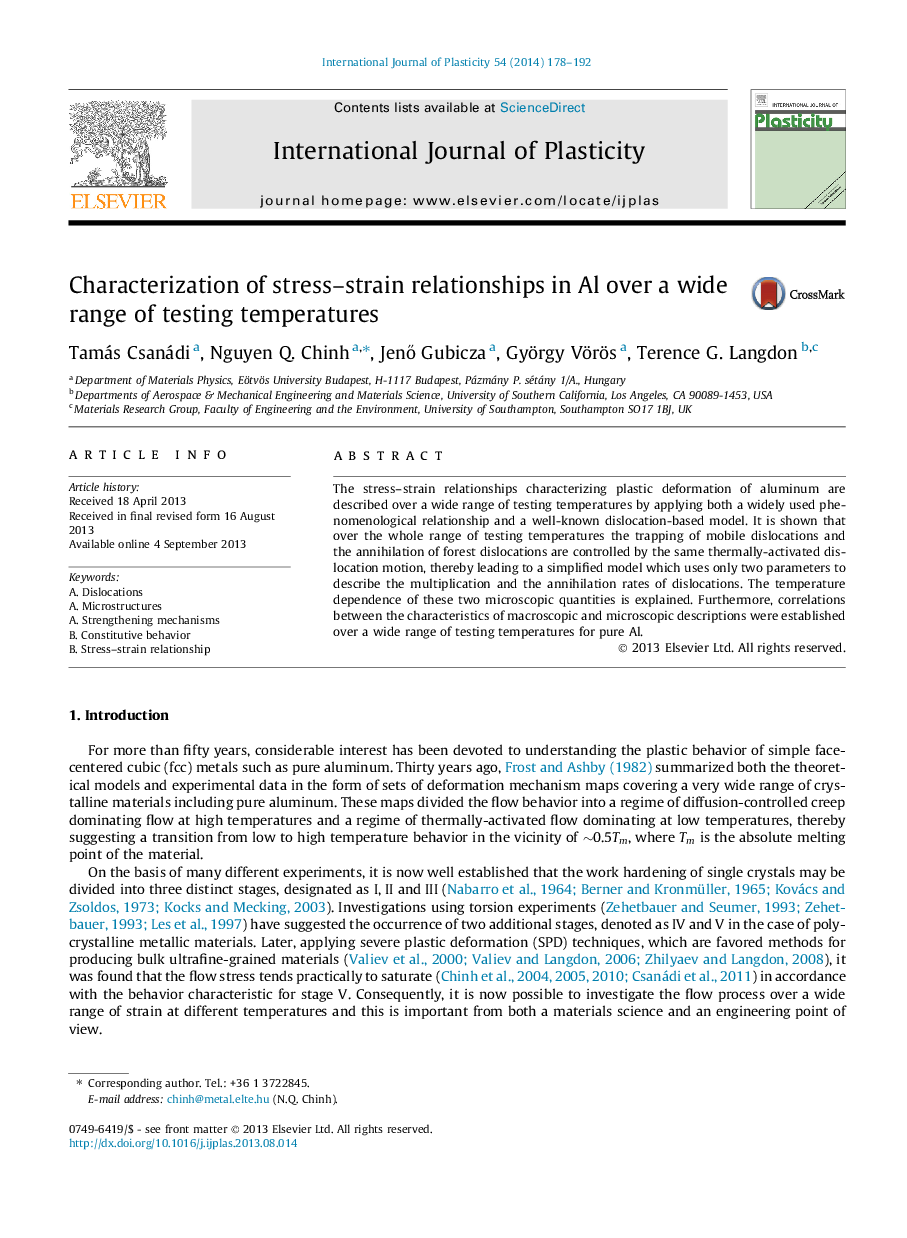| Article ID | Journal | Published Year | Pages | File Type |
|---|---|---|---|---|
| 784420 | International Journal of Plasticity | 2014 | 15 Pages |
•Macroscopic and microscopic descriptions of the stress–strain relationship.•Evolution of the dislocation densities in Al over a wide range of temperature.•Interpretation of the temperature dependence of microscopic mechanisms.•Quantitative correlations between the macroscopic and microscopic characteristics.
The stress–strain relationships characterizing plastic deformation of aluminum are described over a wide range of testing temperatures by applying both a widely used phenomenological relationship and a well-known dislocation-based model. It is shown that over the whole range of testing temperatures the trapping of mobile dislocations and the annihilation of forest dislocations are controlled by the same thermally-activated dislocation motion, thereby leading to a simplified model which uses only two parameters to describe the multiplication and the annihilation rates of dislocations. The temperature dependence of these two microscopic quantities is explained. Furthermore, correlations between the characteristics of macroscopic and microscopic descriptions were established over a wide range of testing temperatures for pure Al.
